Why Avature Video Interview?
Avature Video Interview is an easy-to-implement stand-alone or add-on solution that allows you to offer both live and on-demand interviews on fully branded, accessible and mobile-optimized portals.
Avature Video Interview is an easy-to-implement stand-alone or add-on solution that allows you to offer both live and on-demand interviews on fully branded, accessible and mobile-optimized portals.
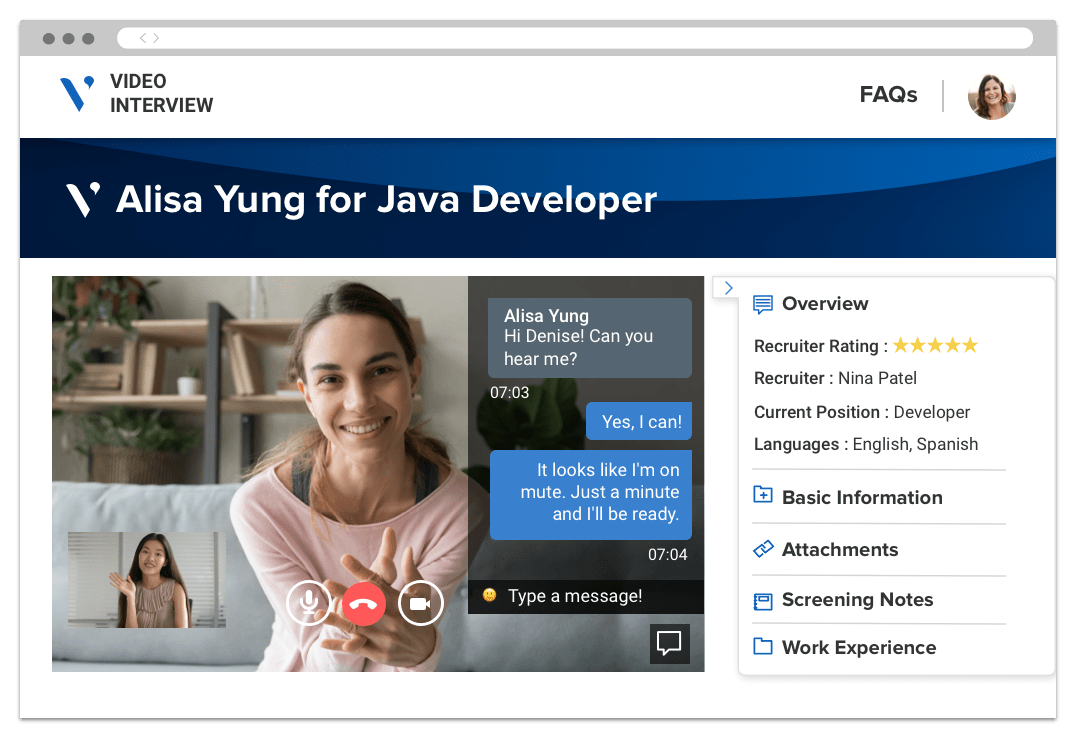
Deliver a flexible live interview experience for multiple participants that reduces scheduling efforts and eliminates travel costs.
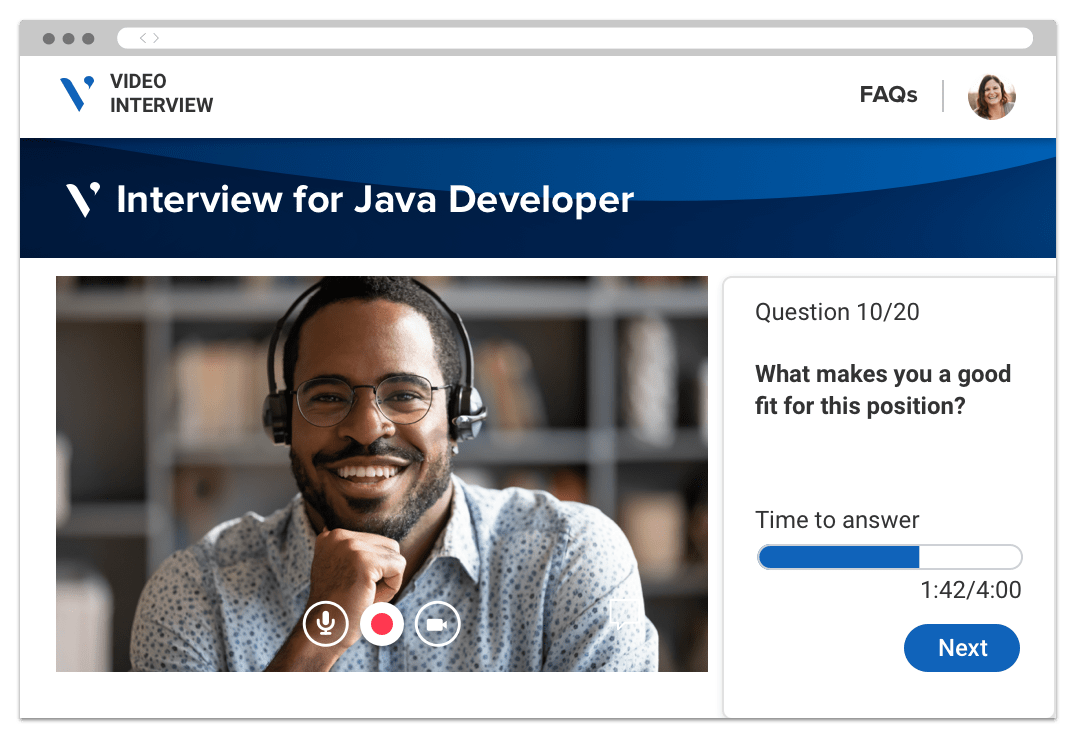
Take advantage of on-demand video interviews that free all stakeholders from scheduling challenges and allow hiring managers to review candidates at their convenience.
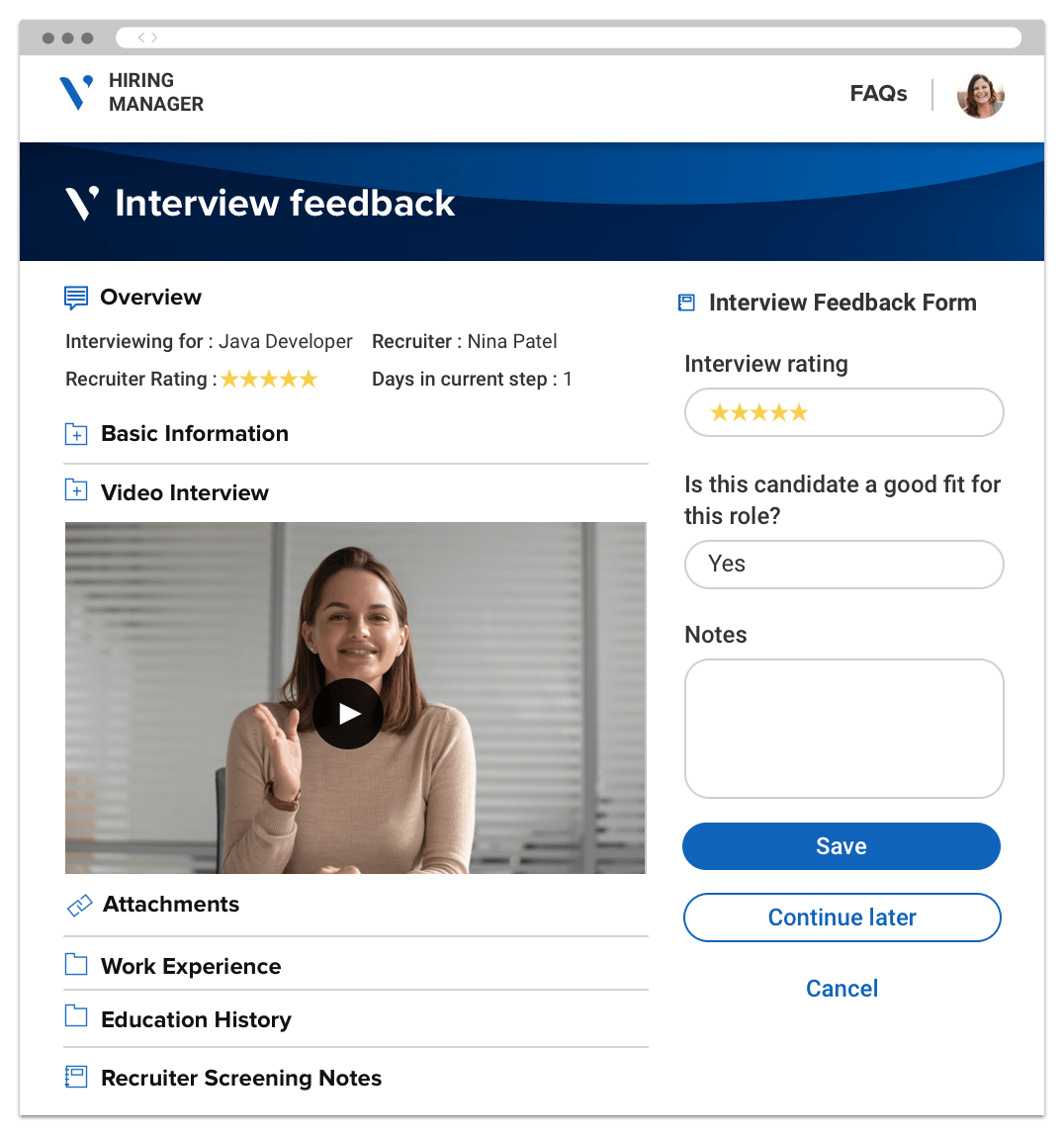
Built-in, form-based questions allow managers to filter candidates based on their answers and review and share recordings with other team members for quick feedback.
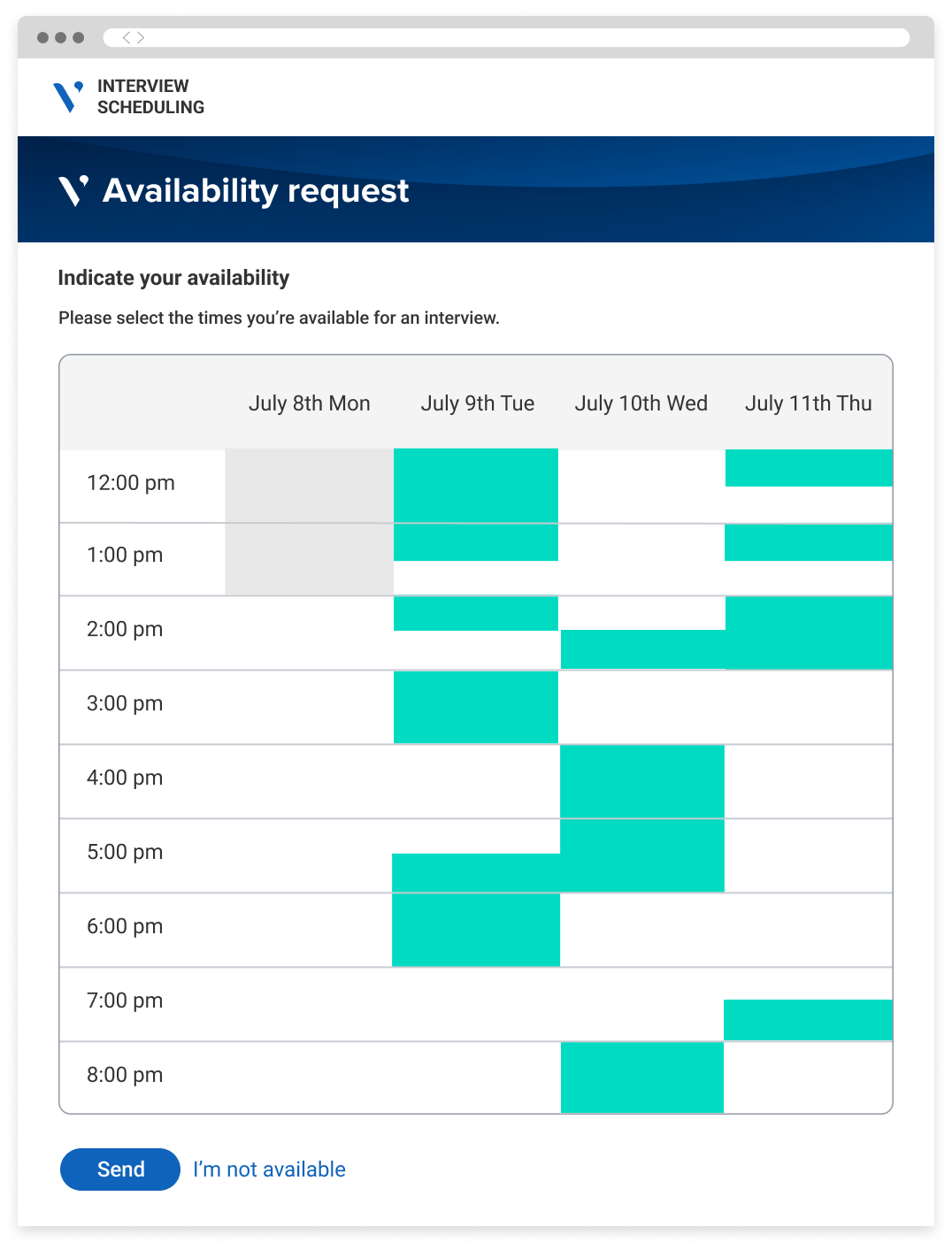
Avature scheduling capabilities eliminate the burden of coordinating live one-to-one, group and panel video interviews. In fact, candidates can self-schedule via a fully branded portal that updates in real time, only displaying time slots that work for everyone.
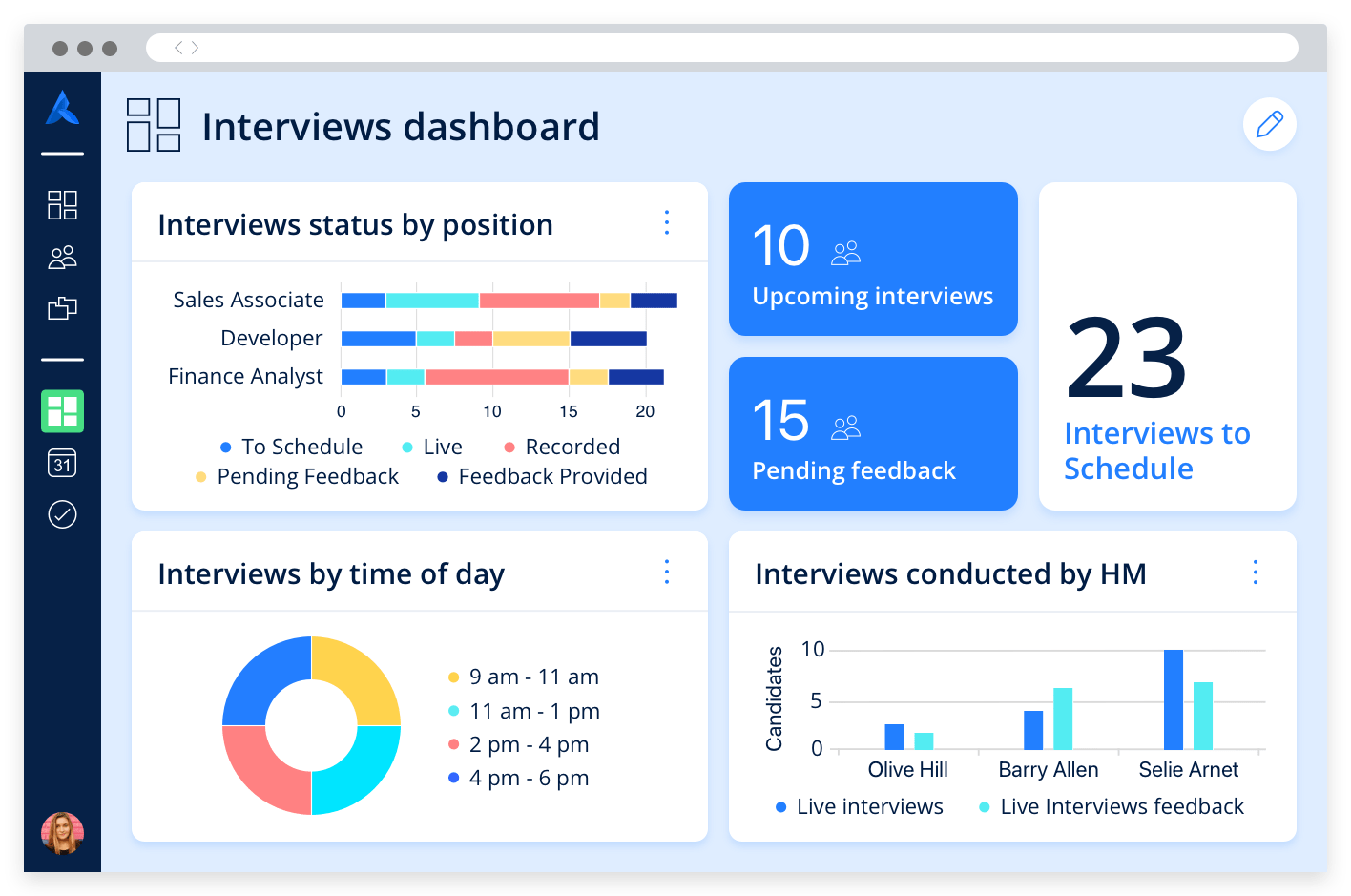
View real-time metrics on scheduled interviews, participants, cancelations, reschedules and other essential data that captures the amount of work your team is doing to support the business.
Combine Video Interview with any Avature Solution of your choice. Connect to Avature CRM and ATS to enrich your sourcing and hiring, Avature Campus & Events to capitalize on virtual events, and even orchestrate video reviews by integrating with Avature Performance Management.
Avature ATS provides a comprehensive toolset to deliver innovative, fully bespoke recruiting services that evolve alongside your organization.
Avature Onboard blends a step-by-step hiring process with an engaging social experience to boost productivity.
Avature Performance Management redefines the review process, adapting it to your unique organizational needs.